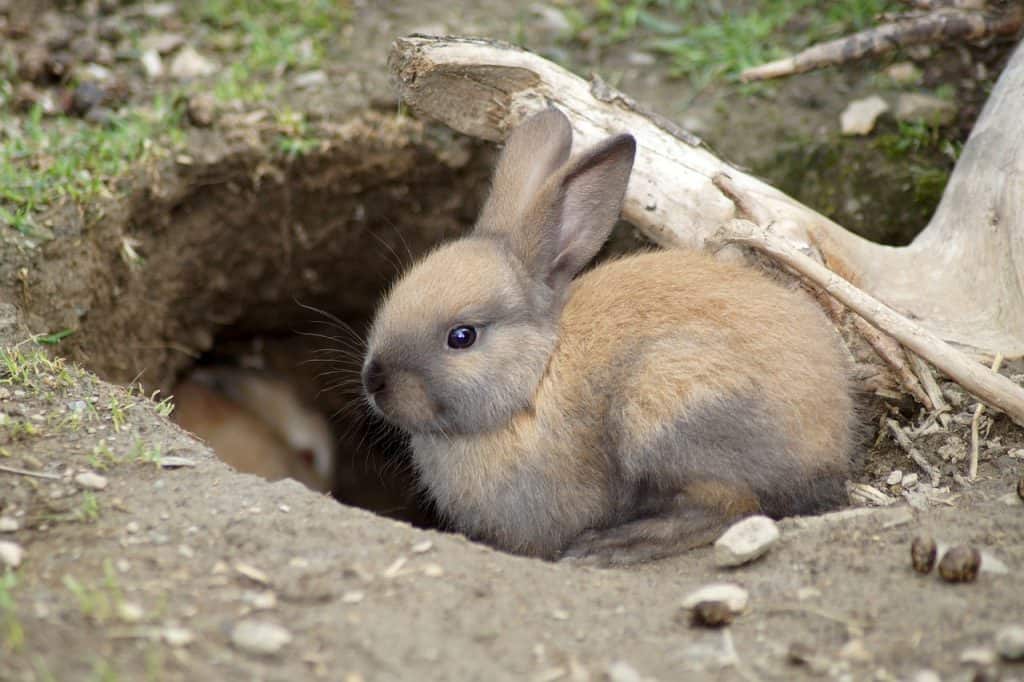
Originally referring to a specific color pattern found almost exclusively in female cats, “calico” often describes a combination of orange, black, and white fur. When speaking of rabbits, though, this same term can refer to any rabbit whose coat displays three distinct colors – not just orange, black, and white.
Perhaps more accurately called tri-colored then, today we’ll be looking at rabbit breeds that prominently display three colors in their coats. In the end, you’ll also see one with a coat so unique that it has its own category within the American Rabbit Breeders Association.
Because nearly every domestic breed of rabbit can show some degree of tri-coloration, we’ve limited our list just to those breeds with bold, striking differences in their colors. In almost every case, this tri-colored configuration is so characteristic of the breed that it is officially recognized by the ARBA.
Ready to get started picking out your favorite colorful rabbits? Then read on to find out more!
1. English Lop
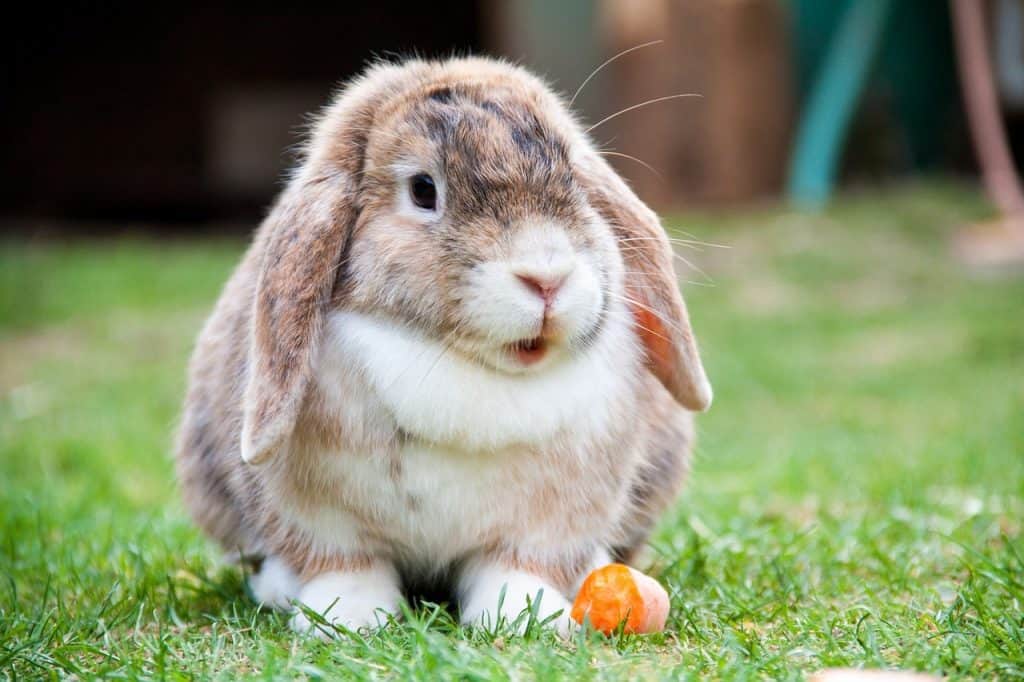
Everybody’s favorite giant-eared rabbit, the English Lop has one of a kind appearance that’s impossible to forget. They are the forebear to all other lop-eared rabbits, though their exact origins remain unknown. They are especially docile for their size (around 10 pounds fully grown) and must be given special care so as to prevent injuries to their often inconveniently placed ears.
Tricolored English Lops are found in any of the following color combinations in conjunction with white: black and golden orange, lavender blue and golden fawn, dark chocolate and golden orange, as well as lilac and golden fawn.
2. French Lop
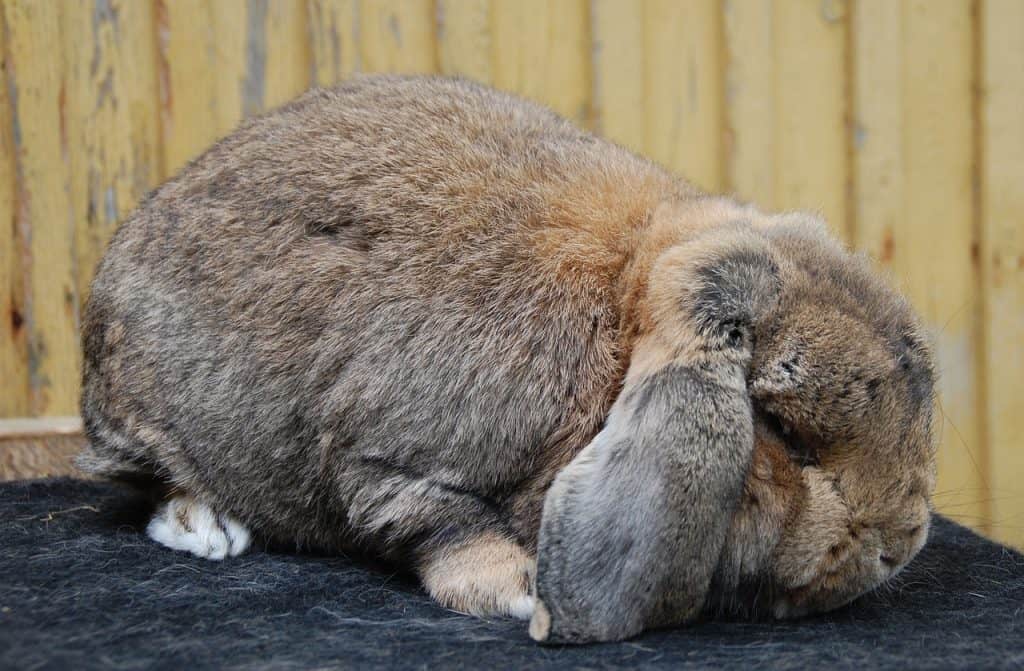
As the heir to a crossbreeding between the above-mentioned English Lop and a lesser-known breed called the Papillon, the French Lop was originally bred for commercial purposes. While its stocky body and lush coat make it ideal for meat and fur production, its gentle and affectionate temperament and variety of colors earned it fame as a house pet, as well.
Like English Lops, tricolored French Lops are seen in the following colors combined with white: black and golden orange, lavender blue and golden fawn, dark chocolate and golden orange, and lilac and golden fawn.
3. Harlequin
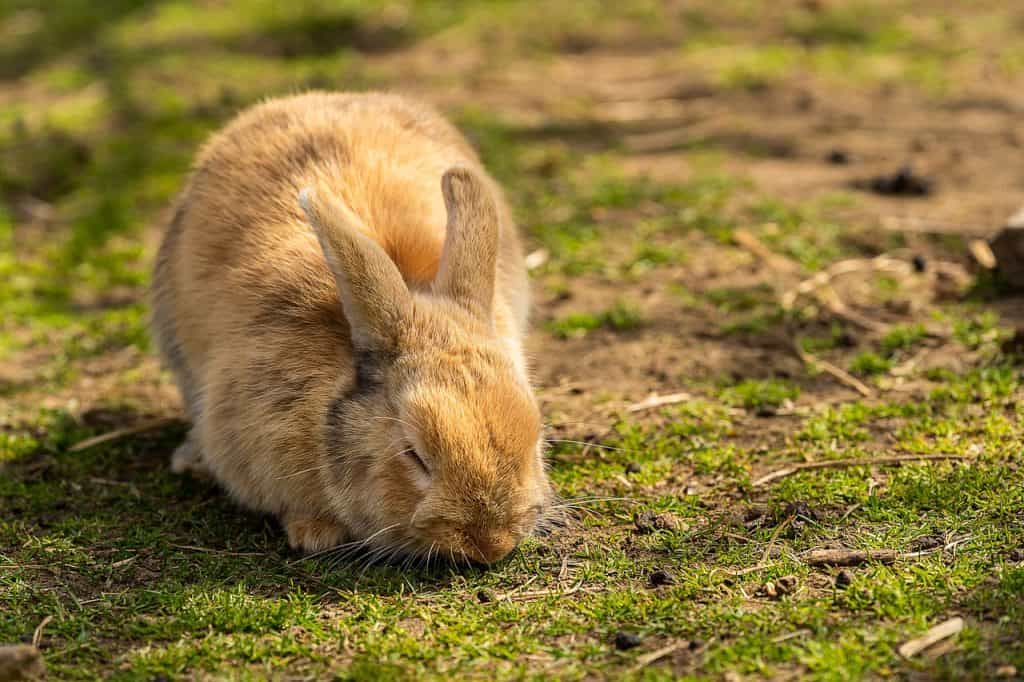
Though not officially recognized as a tricolored rabbit by the ARBA, the Harlequin in some of its coat colors is perhaps most strikingly similar to a calico cat. In particular, the Blue Japanese shows a wide variation and unique patterning in its coat colors. Fun fact: In the early 1900s USA, the Harlequin’s unique and fascinating coloration once made it the most expensive rabbit in the country.
4. Mini Lop

Even weighing under 7 pounds, the Mini Lop is in fact the middleweight of the lop family; the diminutive Holland Lop, a cross with the Netherland Dwarf, is the smallest available. Calmer and more docile than the high-spirited Holland Lop, they are a favorite of pet owners looking for an easy-to-care-for lop breed. For options in their tricolored coats, see the English or French Lop sections.
5. Mini Rex
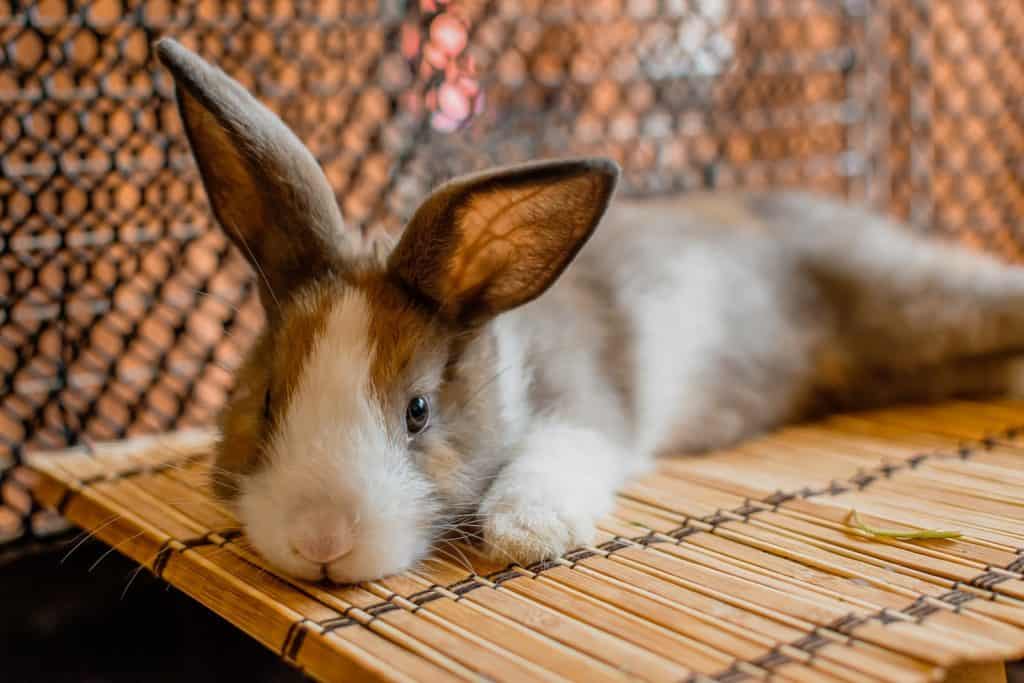
Thick, short, plush fur is emblematic of the Rex family. Though a Mini Rex’s fur is certainly its most desirable quality, combining it with a sweet disposition, easy maintenance, and a variety of coat colors puts these pint-sized Rexes in a category all their own. They rarely weigh over 5 pounds and do well as pets even in small apartments.
Tricolored Mini Rexes are available in combinations of white with the following colors: black and golden orange, lilac and golden fawn, chocolate and golden orange, or blue and golden fawn.
6. Netherland Dwarf
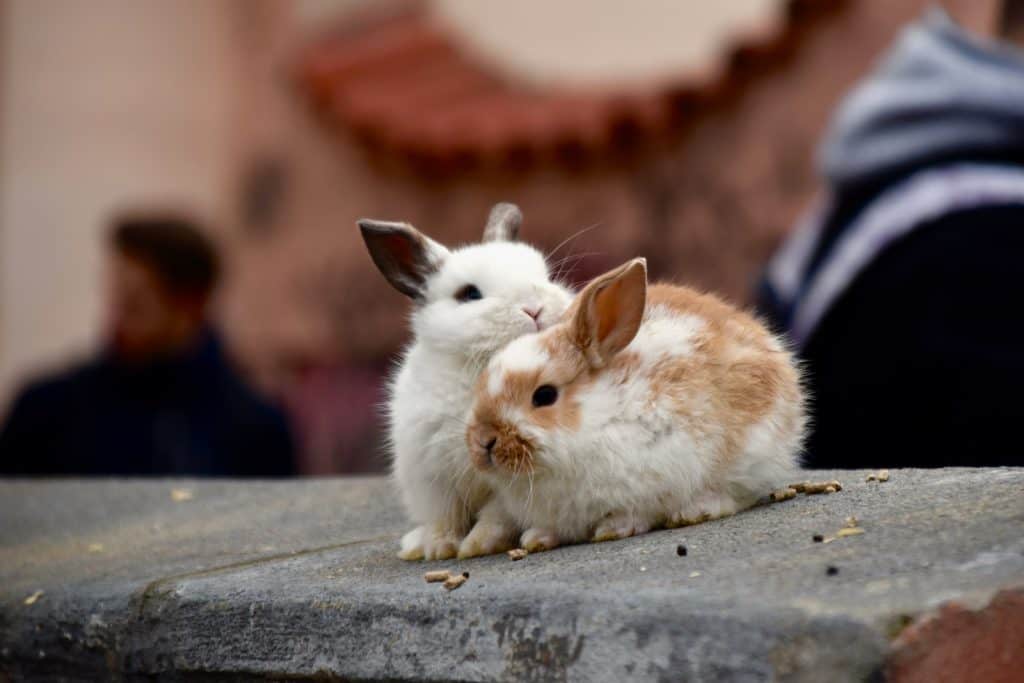
The petite powerhouse that is the Netherland Dwarf has a reputation for housing larger-than-life personalities inside their tiny (less than 3 pound) bodies. Compact and spunky, they are known to settle disagreements with nibbles and chasing! With an endearing appearance and vast array of colors, it remains an incredibly popular breed year after year.
While not an officially recognized tricolor breed, Dwarves in Tan pattern varieties clearly exhibit three distinct colors in their coats.
7. Rex
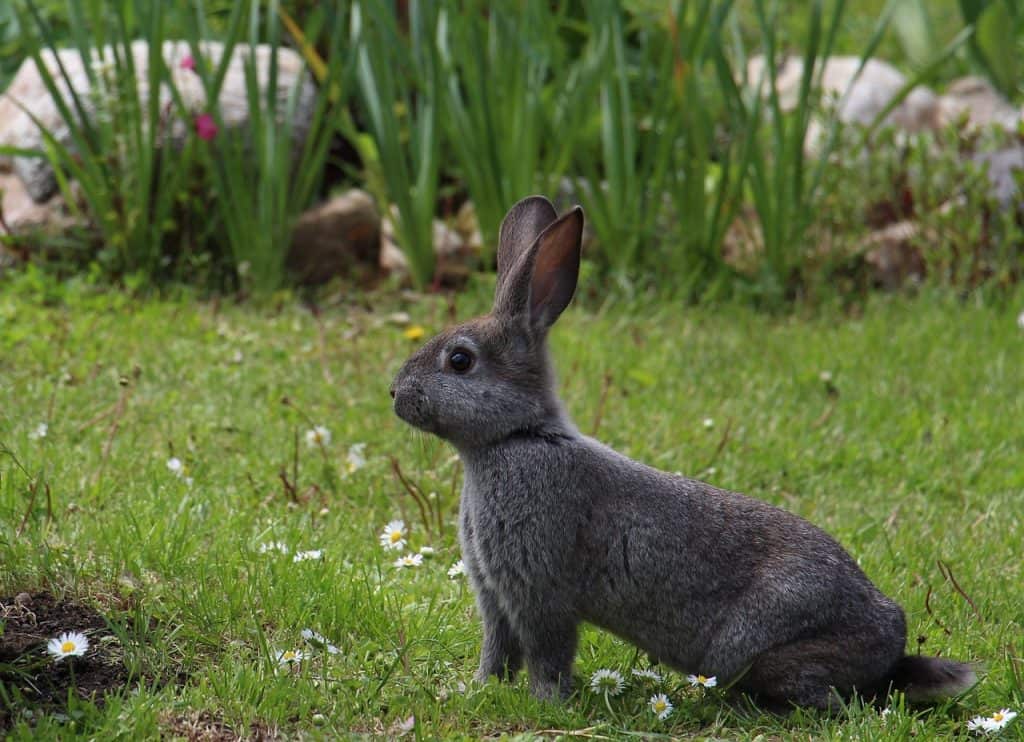
Progenitor to the Mini Rex, this standard-sized breed once sold for nearly $1,500 a pair in 1924 U.S. markets. Renowned for its dense, even fur and solid, muscular structure, it has been a tremendously popular show rabbit since its first import to the United States. At nearly double the weight of their Mini progeny, they are a hardy and adaptable breed.
Rexes in the “broken” color group display white in combination with the following colors: black and golden orange, lavender blue and golden fawn, chocolate and golden orange, and dove grey and golden fawn.
8. Rhinelander
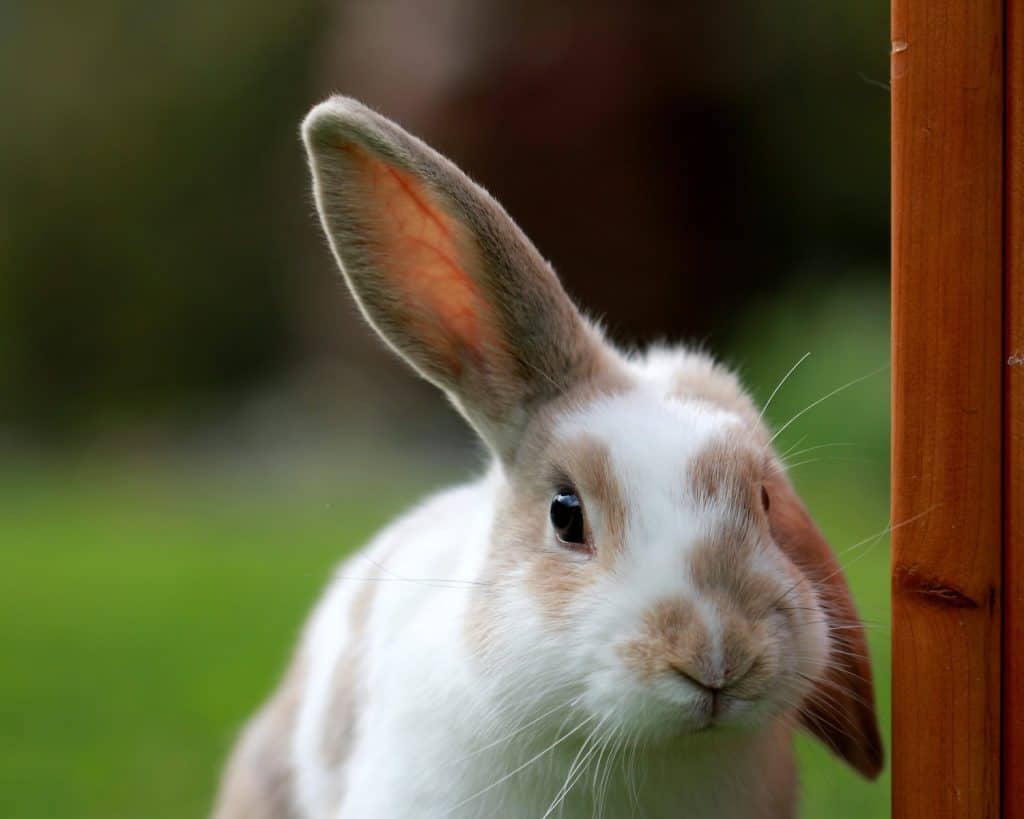
A distinct color pattern is the hallmark of this standard-sized breed. Two-color markings adorn a mostly white body, with dark areas along its spine, nose, ears, and around the eyes. Their full arch body type gives them a striking similarity to wild hares, while their active and graceful temperament makes them interesting pets.
The Rhinelander rabbit is another almost match for the calico cat: black and golden orange on a white background is the most common coloration, though there is also a blue and fawn on white variation.
Honorable Mention: Chinchilla
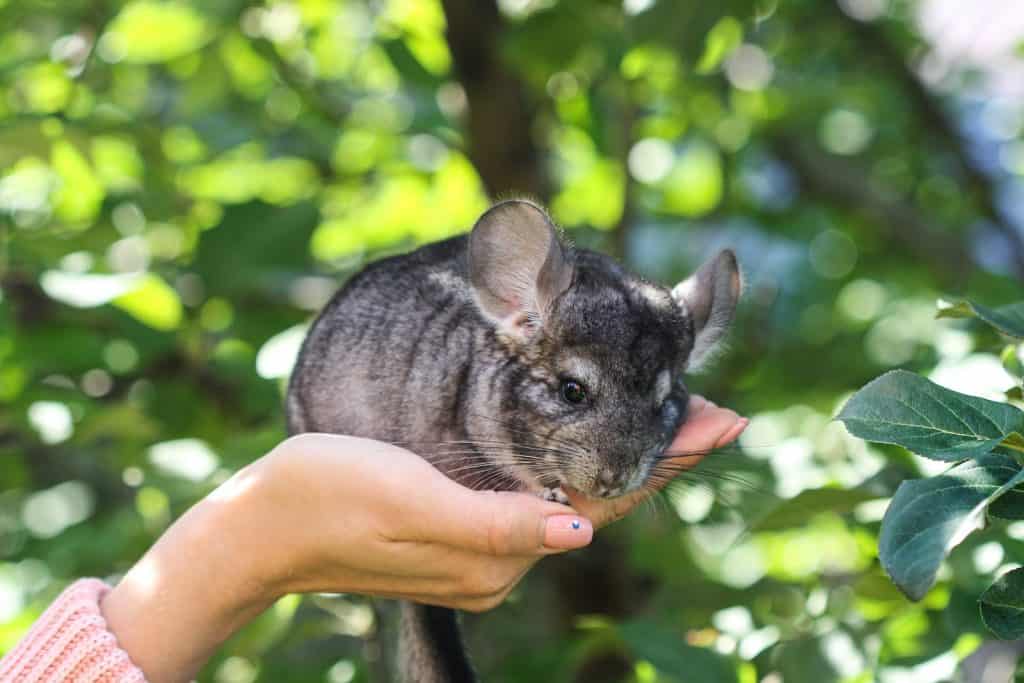
The American, Standard, and Giant Chinchillas fit into an interesting classification by ARBA standards: Their coats are so unique that they’ve been given a separate category for their color. Seen from any angle, their earthen tones give shades of white, grey, blue, black, and brown all at the same time – making it the most colors seen on any individual breed.
Final Thoughts on Calico (Tri-Colored) Rabbit Breeds
Each of these rabbit breeds can be a fascinating example of the influence of genetics and interbreeding on our pets. If not for the work of curious breeders and natural selection, who knows what colors we might not have available today? If you’re curious to see other colors shared by multiple rabbit breeds, please check out our articles on grey, black, and black and white rabbits as well!
What is the most uncommon rabbit color?
They were originally known as the German Blue Vienna, but because of World War I, they have renamed the American Blue Rabbit. It is only found in North America and has become the rarest rabbit breed in the country.
Which rabbit breed has the softest fur?
Rabbit Angora They are well-known for their silky, long, soft wool. They have the appearance of a fur ball but the face of a rabbit. Although not as resilient as other varieties, Angoras are gentle and quiet.
Which rabbit breed is the most similar to a dog?
Japanese harlequin rabbits make excellent pets, especially if you desire a bunny that can learn tricks to the point of becoming ‘dog-like.’ This clever rabbit is also polite, quiet, and entertaining. They like humans, but presenting this breed is quite tough since their markings must be flawless!
What is the most uncommon rabbit breed?
Sumatran striped rabbits are seldom spotted in either meaning. The species is usually thought to be the rarest rabbit in the world, with about a dozen Dutch museum specimens acquired in the early twentieth century, plus an infrequent observation in the wild and a handful of camera trap photographs.
What does the letter F1 signify in rabbit?
F1 refers to the result of mating a purebred to another breed. The F1 specimen must exhibit the basic characteristics of the proposed breed. F2 refers to the result of mating an F1 to a purebred or another F1 or F2 hybrid. F3 signifies mating an F2 to a purebred or another F2 or F3 hybrid.
Which rabbit breed is the easiest to train?
Mini Lops, possibly the most popular breed in the world, are widely sold or produced as pets and show rabbits. They are little with floppy ears, similar to Holland Lops. They are highly joyful and lively, and they are quite easy to teach. Mini Lops are ideal for anybody seeking for a litter-trained rabbit.
Is a black rabbit uncommon?
A very logical hypothesis is that the black rabbits are essentially an uncommon natural ‘freak.’ Black wild rabbits are fully natural and are defined as melanistic, which happens when the melanin gene overproduces, resulting in the black color.
What exactly is a tricolor rabbit?
The Tri-Colour Dutch (also known as the Japanese Dutch or Harlequin Dutch) is a domestic rabbit breed developed in the Netherlands by combining tortoiseshell Dutch rabbits with Harlequin rabbits.